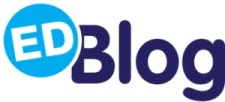By installing a creative curriculum in your school you can get the most out of the imaginative minds of your pupils.
It may be defined by topics or themes, or greater involvement of pupils in deciding what they are going to learn.
These are the benefits of a creative curriculum and the steps you can take to build one.
What is a creative curriculum?
Sir Ken Robinson defined creativity as “purposefully imaginative activity with value”. In educational terms therefore it has a clear educational purpose, is visionary/creative and has measurable value.
It is the basic need for pupils to learn and understand the statutory curriculum, but the needs for children are more complex – and thus vary tasks with broaden mindset and skillset are a critical part of study.
This balance may cause a challenge for some teachers. However, with the help of key drivers, you can strike gold between children’s needs and the curriculum.
How should you determine what you need to teach?
Identifying drivers is a critical part in producing an effective creative curriculum.
These drivers should relate to:
- Needs of your children
- Needs of your community
- School values
- Location of your school
Drivers could be related to enterprise, personal skills, environmental issues or related to moral issues.
Every topic delivered will therefore link to these values.
What is the statutory curriculum?
The statutory curriculum is the study which schools are expected to carry out – each subject has a breath of study and a programme of study. The breath of study is the study of part of the curriculum and segmented into each key stage. It does not require any parts to be repeated, the schools can do so should they choose.
The programme of study, on the other hand, covers essential knowledge, skills and understanding of subjects. This does require repetition as it leads to progress for the student in these areas.
A curriculum map can be used by teachers and heads of subject in order to plan the teaching of subjects on the curriculum.
Implementing a creative curriculum
A creative curriculum is valuable because varies the interest of the students, as well as improves particular learning styles.
The next step to implementing a creative curriculum is imagination.
These four frameworks are critical in order to peak student interest:
- Make it real
- Positively provoke
- Allow time and space
- Add flexibility
Real experience will help pupils understand and relate to the problem in-hand. Making the theme real to children enhances engagement and prompts thoughts they can visualise as they may have experience aspects to learning themselves, seen on television or can put themselves in another person’s shoes.
You could bring up relevance to the past, mentioning legacy to bring it to life. The following stimula could enhance learning: visits, books, videos, artefacts, visitors/speakers.
The next challenge is to provoke children into taking an interest in the learning by using content they are interested in. This is not the same as asking a child what they want to learn about, as often they are unsure of the answer.
By doing this children can feel part of the learning process and allows students to steer (rather than lead) their understanding.
A crucial part of this plan is to ensure children have relevant time and space to undertake tasks and digest information. Try to allow time for your students to explore the lines of enquiry.
Flexibility is also crucial. Try collapsing timetables and stimulating the subject with a dramatic/interesting start.
It is important that you set clear measurable learning goals to evaluate the impact of each task.
For more information click here.
Read more: teaching creative problem solving
This is what EDClass can do
EDClass provides a creative and varied curriculum for young students. Access our wide range of online lessons, live teaching, puzzles, games and more to stimulate pupils’ learning in a non-classroom based approach.
Our academic content is mapped for English, Maths and Science – as well as BTEC and other subjects. Our elearning content, diagnostic tests, exams and online teaching can be timetabled and accessed with the touch of a button.
Diagnostic tests ensure help you provide tailored learning for your students, providing them with work which is most relevant to them.
We can help you bring you non-classroom learning to life.
Call 01909 568 338.









